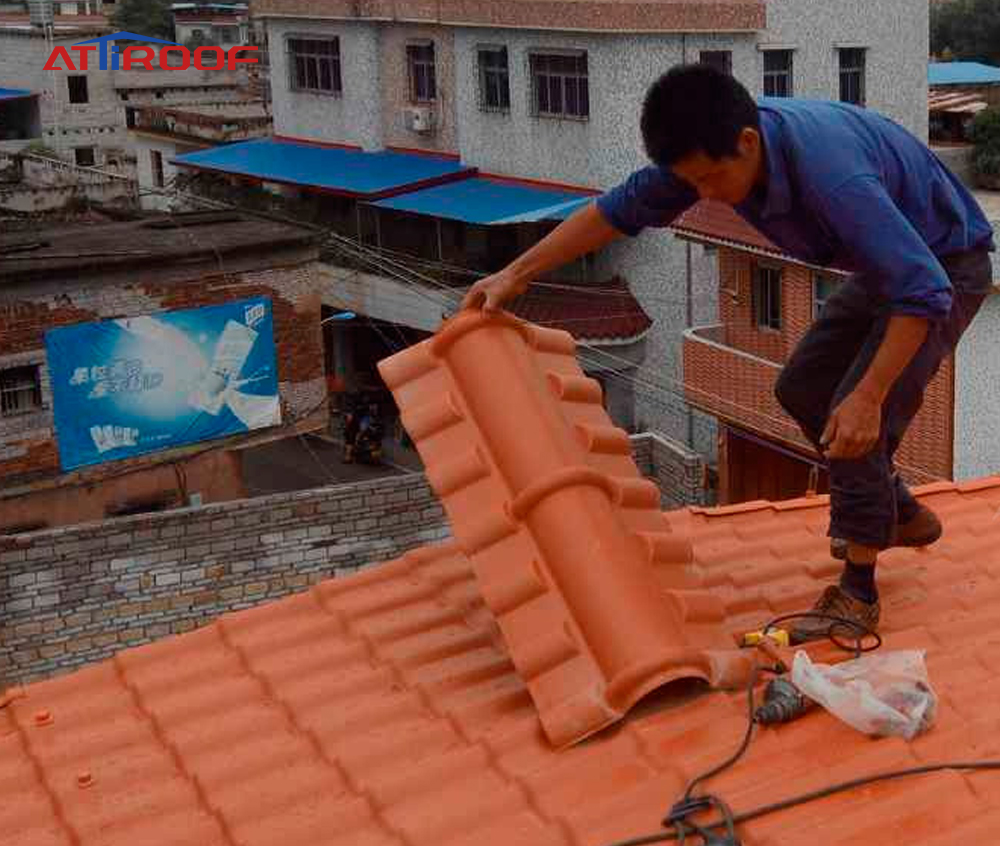Understanding the typical thickness of a roof is important. A roof usually consists of multiple layers, including insulation, waterproofing, and the final roofing material.
For most residential roofs, the total thickness is between 12 to 18 inches, depending on the insulation and structural requirements.
How Thick is PVC Sheet for Roof?
PVC roofing sheets typically range in thickness from 1.2mm to 2.0mm, with some heavier options up to 3.0mm. The thickness of PVC sheets affects their durability, insulation ability, and impact resistance. For example, thicker PVC sheets offer better protection against punctures and help maintain a stable indoor temperature by reducing heat transfer from the outside.
AttiRoof’s APVC1050 Trapezoidal sheets are available in thicknesses of 1.5mm, 1.8mm, 2.0mm, 2.2mm, 2.5mm, 2.8mm, and 3.0mm. These sheets are ideal for use in workshops, warehouses, factories, and other high-corrosion environments like chemical plants, electroplating factories, and coastal buildings.
How PVC Sheet Thickness Fits into the Overall Roof Structure?
The thickness of PVC sheets plays a key role in the overall roof structure. In warmer climates, such as those in many parts of India, thicker PVC sheets are preferred because they reduce heat transfer:
1. In warm climates, intense solar radiation can make roof surfaces extremely hot. Thicker PVC sheets help reduce the amount of heat that passes through the roof, keeping the indoor space cooler. This can lower the use of air conditioning and save energy costs.
2. In warm regions, extreme weather conditions, such as high temperatures and strong UV rays, can speed up material aging. Thicker PVC sheets are more durable in such environments, resisting deformation and damage, and extending the roof’s lifespan.
3. Thicker sheets are stronger and can better withstand extreme weather conditions like strong winds and storms, ensuring the roof's structural safety.

In cooler regions, where the climate is milder, the thickness requirements for PVC sheets are different:
1. In cooler climates, buildings do not need excessive insulation because the external temperatures are not as high. In these cases, thinner PVC sheets can be used to reduce material costs while still offering sufficient protection and insulation.
2. In cooler areas, moisture resistance and thermal insulation may be more important. While thinner PVC sheets may be enough, it is essential to ensure they are thick enough to prevent condensation or cold air from entering, thus keeping indoor temperatures stable.
3. Using thinner PVC sheets in cooler regions can reduce both material and installation costs while still meeting basic roofing needs.




















